
Physical and Engineering Sciences in Medicine
Scope & Guideline
Fostering Collaboration for Cutting-Edge Medical Solutions
Introduction
Aims and Scopes
- Medical Imaging Technologies:
Exploration of advanced imaging modalities, including CT, MRI, PET, and ultrasound, focusing on image reconstruction, quality assurance, and the development of novel imaging techniques. - Radiation Therapy and Dosimetry:
Research on dosimetric evaluations, treatment planning systems, and innovative radiation therapy techniques, including the use of machine learning for optimizing treatment outcomes. - Biomedical Engineering Applications:
Development and validation of engineering solutions in medical contexts, such as prosthetics, assistive devices, and the application of materials science in medical devices. - Artificial Intelligence in Medicine:
Implementation of AI and machine learning techniques for diagnostic purposes, predictive modeling, and the automation of medical image analysis. - Clinical Physics and Quality Assurance:
Studies focusing on quality assurance protocols, safety standards, and clinical practices in the field of medical physics, including the evaluation of imaging and treatment technologies.
Trending and Emerging
- Deep Learning and Machine Learning Applications:
There is a noticeable increase in research applying deep learning techniques to medical imaging and diagnostics, highlighting the importance of AI in enhancing diagnostic accuracy and efficiency. - Personalized Medicine and Treatment Planning:
Emerging themes focus on personalized approaches in radiation therapy and treatment planning, utilizing patient-specific data to optimize outcomes and minimize side effects. - Integration of IoT and Wearable Technologies:
Research is increasingly exploring the use of Internet of Things (IoT) devices and wearable technologies for continuous health monitoring and data collection, reflecting a shift towards proactive healthcare management. - Hybrid Imaging Techniques:
The combination of various imaging modalities to provide comprehensive diagnostic information is gaining traction, with studies focusing on the synergetic use of CT, MRI, and PET technologies. - Quantitative Imaging Biomarkers:
The rise in studies focusing on the extraction and application of quantitative imaging biomarkers for disease diagnosis and prognosis indicates a trend towards more precise and data-driven medical evaluations.
Declining or Waning
- Traditional Imaging Techniques:
The focus on conventional imaging methods without integration of AI or advanced computational techniques is decreasing as more researchers turn to innovative imaging solutions that leverage deep learning and sophisticated algorithms. - Basic Dosimetry Studies:
Research that solely revolves around traditional dosimetry without the incorporation of modern technology and methodologies is becoming less common, as the field moves towards more integrated and comprehensive approaches. - General Reviews on Medical Physics:
The prevalence of broad, non-specific reviews in medical physics is diminishing in favor of focused studies that provide deep insights into niche areas of research, reflecting a trend towards specialization.
Similar Journals
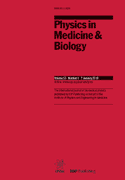
PHYSICS IN MEDICINE AND BIOLOGY
Advancing the Frontiers of Medical PhysicsPHYSICS IN MEDICINE AND BIOLOGY is a prestigious journal published by IOP Publishing Ltd, with a storied history dating back to 1956 and extending through 2024. This internationally recognized journal caters to the interdisciplinary fields of medical physics and bioengineering, making significant contributions to the research and development of advanced diagnostic and therapeutic technologies. It holds an impressive Q1 ranking in both Radiological and Ultrasound Technology and Radiology, Nuclear Medicine and Imaging categories, reflecting its critical role in disseminating high-quality research. With a significant focus on merging the principles of physics with advancements in medicine, PHYSICS IN MEDICINE AND BIOLOGY serves as an essential resource for researchers, professionals, and students alike, fostering innovation and enhancing collaboration in the healthcare sector. Although the journal is not currently open access, it maintains robust participation in the Scopus database, ranking #62 out of 333 in Radiology, Nuclear Medicine and Imaging and #17 out of 63 in Radiological and Ultrasound Technology, signifying its influence and reach within these disciplines.
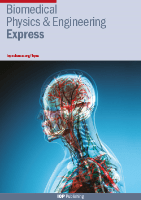
Biomedical Physics & Engineering Express
Transforming Research into Real-World SolutionsBiomedical Physics & Engineering Express, published by IOP Publishing Ltd, serves as a dynamic platform for the dissemination of groundbreaking research in the interdisciplinary domains of biomedical physics, engineering, and related fields. With a focus on innovative solutions for healthcare challenges, the journal extends its reach to a global audience, providing valuable insights that influence both academic research and practical applications. Operating under an open-access format, this journal ensures that vital scientific discoveries are readily available to researchers, professionals, and students alike. Ranking within the Q3 and Q4 quartiles across various categories—including Bioengineering and Biomedical Engineering—indicates its emerging influence in the scientific community since its inception in 2015. With an increasing footprint in Scopus rankings and a commitment to advancing knowledge in subfields such as biophysics and health informatics, Biomedical Physics & Engineering Express plays a crucial role in shaping future innovations in healthcare technology and patient care.
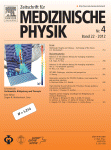
Zeitschrift fur Medizinische Physik
Shaping the future of medical technology.Zeitschrift für Medizinische Physik is a prominent academic journal dedicated to advancing the field of medical physics, published by ELSEVIER. With an ISSN of 0939-3889 and an E-ISSN of 1876-4436, this journal has transitioned to an Open Access model since 2022, ensuring that cutting-edge research is readily accessible to a global audience. Based in Germany at RADARWEG 29, 1043 NX AMSTERDAM, NETHERLANDS, the journal encompasses a wide array of topics related to medical physics, thereby facilitating interdisciplinary collaboration. Its impressive categorization includes Q3 in Biophysics and Q2 in both Radiological and Ultrasound Technology and Radiology, Nuclear Medicine and Imaging as of 2023, reflecting its significant contribution to the scientific community. In the Scopus rankings, it holds respectable positions in its categories: #143/333 in Radiology and Nuclear Medicine, #28/63 in Radiological and Ultrasound Technology, and #83/152 in Biophysics, demonstrating its influence and reach. The journal's focus is not only on publishing innovative research but also on fostering education and discussion among researchers, professionals, and students in medical physics. Zeitschrift für Medizinische Physik invites scholars at all levels to contribute and engage with the content that shapes the future of this vital field.

ANNALS OF BIOMEDICAL ENGINEERING
Pioneering research for a healthier tomorrow.ANNALS OF BIOMEDICAL ENGINEERING is a premier journal in the field of biomedical engineering, published by Springer. Established in 1972, this journal has become a vital resource for researchers, professionals, and students engaged in the rapidly evolving domain of biomedical technology. With a commendable impact factor and ranked in the 76th percentile among its peers as per Scopus, it exemplifies excellence in disseminating critical research findings. The journal covers a broad scope of topics related to the integration of engineering principles with medical and biological sciences, facilitating innovations that enhance healthcare outcomes. Although open access is not offered in this journal, it remains an essential platform for scholarly communication, contributing to the continuous advancement of knowledge in biomedical engineering. ANNALS OF BIOMEDICAL ENGINEERING is not only a bridge for academics to share groundbreaking research but also an influential guide for practical applications in medicine and health technologies, making it a fundamental publication for its readership.

Progress in Biomedical Engineering
To elevate biomedical solutions for a healthier tomorrow.Progress in Biomedical Engineering, published by IOP Publishing Ltd, is a premier open-access journal that serves as a vital platform for the dissemination of innovative research in the field of biomedical engineering. With an impressive Q1 classification in the Biomedical Engineering category for 2023, this journal has established itself as a significant contributor to the advancement of engineering solutions that improve healthcare outcomes. Recognized for its high-quality and impactful publications, it ranks 51st out of 303 in its field on Scopus, placing it in the 83rd percentile. The journal aims to foster interdisciplinary collaboration and introduce pioneering methodologies and technologies that bridge the gap between engineering and medicine. By providing a pathway for rapid communication of fundamental and applied research, Progress in Biomedical Engineering is dedicated to shaping the future of healthcare technology. Access to its content ensures that researchers, professionals, and students remain at the forefront of biomedical innovation.

EUROPEAN JOURNAL OF RADIOLOGY
Enhancing Knowledge, Improving Imaging PracticesThe European Journal of Radiology, published by Elsevier Ireland Ltd, is a premier peer-reviewed journal in the fields of radiology, nuclear medicine, and imaging. Established in 1981, it has carved a significant niche within the academic community, showcasing innovative research that enhances medical imaging practices and improves patient care. With an impressive ranking in the Q1 category for both Medicine (miscellaneous) and Radiology, Nuclear Medicine, and Imaging in 2023, the journal is recognized globally for its commitment to advancing scientific knowledge and improving imaging methodologies. The journal's Scopus ranking of #60/333, placing it in the 82nd percentile, underlines its reputation for high-quality research and scholarly contributions. While traditionally a subscription-based journal, it continually evolves to meet the demands of the academic landscape, aiming to bridge the gap between research and clinical practice. Researchers, healthcare professionals, and students alike can benefit from exploring its extensive archives and current publications, which are curated to foster education and innovation in the medical imaging domain.
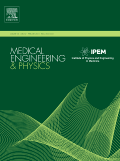
MEDICAL ENGINEERING & PHYSICS
Advancing the Frontiers of Medical TechnologyMEDICAL ENGINEERING & PHYSICS, published by Elsevier Science Ltd, is an esteemed journal in the fields of Biomedical Engineering and Biophysics. With an ISSN of 1350-4533 and an E-ISSN of 1873-4030, it has established itself as a significant resource from its inception in 1994, continuing to deliver pivotal research up to 2024. This journal, categorized in the Q3 quartile for both Biomedical Engineering and Biophysics, holds a respectable position in Scopus rankings, boasting its relevance in the upper echelons of academic inquiry, particularly ranking #75/152 in Biophysics and #158/303 in Biomedical Engineering. Authors and researchers in these dynamic fields will find the journal’s rigorous peer-review process and commitment to publishing high-quality original research invaluable for advancing their work. Although the journal is not open access, it continues to attract submissions that push the boundaries of innovation and application in medical technologies, making it an essential resource for anyone dedicated to the integration of engineering principles with medical sciences.

INTERNATIONAL JOURNAL OF IMAGING SYSTEMS AND TECHNOLOGY
Empowering Insights in Biomedical Imaging and BeyondINTERNATIONAL JOURNAL OF IMAGING SYSTEMS AND TECHNOLOGY, published by Wiley, is a leading journal dedicated to advancing the field of imaging systems and technologies. With an ISSN of 0899-9457 and E-ISSN 1098-1098, this esteemed journal offers a platform for high-quality research spanning essential interdisciplinary areas, including Biomedical Engineering, Computer Science, and Health Informatics. Recognized for its impactful contributions, it holds a commendable position in the Q2 quartile across multiple categories as of 2023. The journal boasts an excellent Scopus ranking, with notable acknowledgments like rank #49 out of 333 in Radiology, Nuclear Medicine, and Imaging, showcasing its relevance and importance in the academic community. Publishes annually from 1989 to 2024, it aims to bridge gaps in knowledge and foster innovative developments through rigorous peer-reviewed articles. Though it operates under a traditional access model, the journal maintains an accessible repository of cutting-edge research, making it indispensable for researchers, professionals, and students alike seeking to stay at the forefront of imaging technology advancements.
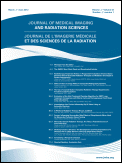
Journal of Medical Imaging and Radiation Sciences
Transforming healthcare through cutting-edge imaging studies.Journal of Medical Imaging and Radiation Sciences, published by Elsevier Science Inc, is a prominent platform dedicated to advancing research and knowledge in the field of medical imaging and radiation sciences. With an ISSN of 1939-8654, this journal plays a crucial role in disseminating innovative studies and insights from 2008 to 2024, providing a valuable resource for researchers, professionals, and students alike. It is positioned within the Q3 quartile in both the categories of Radiological and Ultrasound Technology and Radiology, Nuclear Medicine and Imaging, indicating its growing influence and contributions to these critical areas of healthcare. While it currently does not offer open access, authors benefit from the journal's rigorous peer-review process, ensuring high-quality publications. As the landscape of medical imaging continues to evolve, the Journal of Medical Imaging and Radiation Sciences stands out for its commitment to education and innovation, inviting contributions that explore the latest technological advancements and clinical applications.

Cardiovascular Engineering and Technology
Driving Innovation in Cardiovascular TechnologiesCardiovascular Engineering and Technology, published by SPRINGER, stands as a prominent journal in the fields of Biomedical Engineering and Cardiology. With an ISSN of 1869-408X, this journal bridges the gap between engineering innovation and cardiovascular health by exploring the latest advancements pertinent to cardiovascular technologies and therapies. The journal, currently in its converged years from 2010 to 2024, holds important positions in Quartile 3 of both Biomedical Engineering and Cardiology and Cardiovascular Medicine categories, highlighting its relevance and influence in these domains. Ranked in the 59th percentile for Cardiology and 42nd percentile for Biomedical Engineering, the journal is a valuable resource for researchers, professionals, and students keen on understanding the intersection of engineering solutions and cardiovascular medicine. Although the journal is not open access, it remains highly regarded for its rigorous peer-reviewed content that contributes to the advancement of technology in the cardiovascular field.